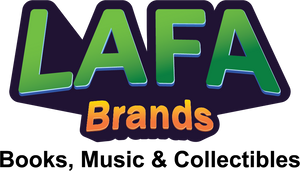
The Art of Fly Tying
Nobody knows exactly when the first artificial fly was tied, although the art is most commonly believed to have originated in ancient Greece. The one certain thing, however, is that its major evolution began only in this century, perhaps even in the past few decades.
The art and science behind the fly patterns of today come largely from the contributions of such great American fly tiers as Lee Wulff, Harry Darbee, Ernest Schwiebert, Charles K. Fox, Vince Marinaro, Art Flick, Poul Jorgensen, Doug Swisher and Carl Richards, to name only a few. Thus it was in the United States that many of the best-known creations of our time were developed. Among the many innovative and nontraditional dressings to emerge were streamers, hairwing dry flies, bass bugs, realistic nymphs, thorax flies and no-hackle flies.
Increasing fishing pressure and the inevitable education of fish have contributed to the development of a new school of thought in fly tying. Attractor patterns succeeded in fooling naive fish in the time of our grandfathers, but today, more and more realistic imitations have emerged in response to these "educated," or selective, fish.
The spirit of research has always been present among expert fly tiers, but now there is a growing -- in fact, mushrooming-grass-roots interest in learning the basic techniques. It is to assist the many beginners that we decided to put this book together and offer a work that attempts to address all aspects of the fascinating art of fly tying.
- In Stock Out of Stock
- Firefly Books
- 9781552090749
- September 1, 1996
- Stock Photo
- 206
- L 27.7cm x W 21.1cm x H 1.4cm
Book Condition Notes
New: A brand-new, unused, unread copy in perfect condition.
Like New: A copy that looks unread and in perfect condition. Dust jacket is intact, with no nicks or tears. The spine has no signs of creasing. Pages are clean and are do not have any notes or folds of any kind. May have a remainder mark. (usually black or red in colour and is usually a dot or line on the bottom of the book on the page edges).
Very Good: A copy that has been read but is in great condition. May have slight cosmetic defects such as marks, wears, cuts, bends and crushes on the cover, pages, spine and dust jacket if applicable. Pages and dust cover (if applicable) are intact and do not have any notes or highlighting. The spine remains undamaged. May have a remainder mark (usually black or red in colour and is usually a dot or line on the bottom of the book on the page edges).
Good: A copy that has been read but in clean condition. The spine, cover, pages and dust jacket (if applicable) may show signs of wear such as marks, wears, cuts, bends and crushes. Pages and dust cover (if applicable) are intact and do not have any notes or highlighting. May have a remainder mark (usually black or red in colour and is usually a dot or line on the bottom of the book on the page edges).
Acceptable: All pages are intact; the cover is intact. The spine, cover, pages and dust jacket (if applicable) may show signs of considerable wear such as marks, wears, cuts, bends and crushes. Pages can include limited notes in pen or in highlighter, but the notes do not obscure the text. May have a remainder mark (usually black or red in colour and is usually a dot or line on the bottom of the book on the page edges).

